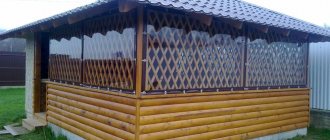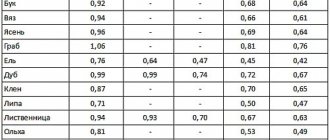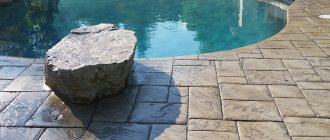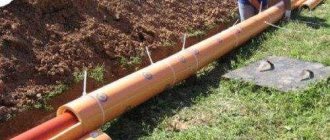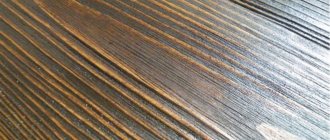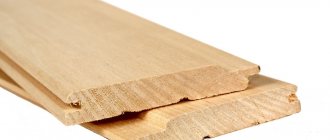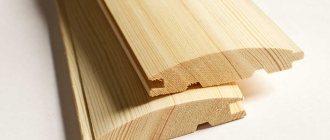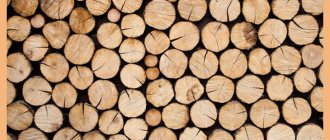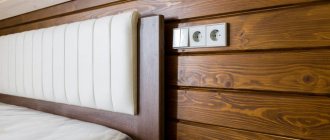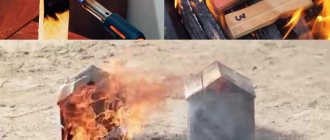Wood occupies a leading position in the construction market. Its characteristics and abilities have been tested over the years. It is used both for the construction of buildings and for various finishing works. But in turn, wood is inferior to its competitors (stone, plastic, metal) due to its low resistance to biological agents. Insects, mold, and fungi can cause significant harm to the material, its appearance and strength. You can protect wood from the effects of biological agents and extend its service life by treating it with folk protective agents.
Protecting wood with copper sulfate
This method of wood processing is the most affordable and widespread. Copper sulfate prevents the formation of rotting of the material for a long time. Mixing with its juice, it prevents the action of moisture on wood, which is the main cause of its decay. This product changes the shade of the wooden material, which needs to be taken into account.
But there are also disadvantages to using copper sulfate; it is unsafe. When heated, it releases toxic substances. And when working with the composition, you need to use gloves to prevent it from coming into contact with the skin, as it irritates it.
How to protect a wooden house from fire
Coatings. For coating, the same compositions are used as for putty, but with a slightly larger amount of clay. The surface of the wood can be coated with oily clay and fine sand. The composition for coating is made more diluted than for putty. To prevent the coating from falling off, it is necessary to add gypsum, wood glue or some other adhesive to it. The thickness of the total coating layer should be in the range of 2 - 6 mm. Fire-retardant compositions with lime It has quite satisfactory fire-retardant properties and is recommended for wide use, since the components included in it are inexpensive and relatively scarce. The amount of materials included in the composition is expressed in the formulation as a percentage by weight, but not by volume. To process 1 m2 of wood you need:
| slaked lime | 800 g (62%) |
| water | 400 g (32%) |
| alum | 20 g (1.5%) |
| table salt | 40 g (3%) |
| 14% soda ash solution (optional) | 20 g (1.5%) |
The amount of water is calculated for medium-thick lime dough. The composition is prepared as follows. First, dissolve table salt and alum in water and add a soda solution to them. After this, lime is added to the prepared solution and mixed thoroughly before coating begins. The composition is applied to the wood twice, and a more liquid layer can be applied the first time; The second coating is done only after the first layer has dried. Coating is done with an ordinary paint brush. This composition is somewhat modified compared to the previous one. It is used in the absence of alum. Its recipe, like the previous composition, is determined in terms of the weight percentage of the materials included in it. The consumption of materials per 1 m2 of treated wood surface is as follows:
| slaked lime | 810 g (63%) |
| table salt | 65 g (5%) |
| water | 405 g (32%) |
The composition is prepared in the same way as the previous one: lime is mixed with a previously prepared solution of table salt and then water is added, bringing the composition to the consistency of sour cream. The thickness of the protective layer and methods of applying the composition to the surface of the wood remain the same as for composition No. 1. This the composition also showed good fire retardant properties. It is used in the presence of quicklime. To treat 1 m2 of wood surface you need:
| quicklime | 300 g (33%) |
| table salt | 60 g (7%) |
| water | 540 g (60%) |
Cooking method. Initially, table salt is dissolved in water. It is stirred until completely dissolved to obtain an 11% solution. With this solution, lump quicklime is slaked (approximately 2 liters of the prepared solution are poured into 1 kg of lime) until a liquid of creamy consistency is obtained. Lime slaking is carried out in compliance with the usual requirements for this. The composition is filtered through a sieve with two-millimeter holes, after which it is ready for use. Fire retardant compositions with liquid glass This composition, like the next one, is more expensive than the previous ones. It has high protective properties and provides a stronger and longer-lasting adhesion of the coating to the wood. The consumption of materials per 1 m* of processed wood will be as follows:
| liquid glass 30° Baume | 280 g (28%) |
| ground bricks | 720 g (72%) |
Ground brick can be replaced by another type of baked clay. Cooking method. Ground brick (or its substitute is first sifted through a fine sieve with 0.15 mm holes and mixed with liquid glass. If, after mixing, the mass turns out to be thicker than a creamy liquid, it is diluted with an appropriate amount of water. After the composition is ready, it should not be later than two to three hours later, apply to the surface of the treated wood. Coating with the composition is done twice, the second time this is done after drying the first layer. This is one of the best compositions in terms of fire protection. It should be used to cover the most critical structures. Material consumption per 1 m2 processed wood:
| ground asbestos | 100 g (10%) |
| chalk | 300 g (30%) |
| liquid glass 30° Baume | 400 g (40%) |
| water | 200 g (20%) |
Crushed asbestos and dry chalk are pre-mixed together and then liquid glass is added. Otherwise, proceed in the same way as in the manufacture of composition No. 4. Fire retardant compositions made of clay and other materials This composition consists of:
| superphosphate | 3 volumetric parts |
| water | 1 volumetric part |
Cooking method. The components measured by volume are stirred with a wooden paddle or stirrer in barrels until creamy thick. The composition is applied three times; The previously applied layer must dry out.
| clay preparation | 4 volumetric parts |
| lime milk | 1 volumetric part |
| adhesives (hide or starch glue) | 4 - 5% of the total volume |
This composition is less effective compared to compositions made with liquid glass, but it is still able to protect wood from fire. It is produced in the following way. They take clay and dilute it with water in some vessel (barrel, vat). The water is allowed to settle and its excess is gradually removed until the clay takes on the appearance of highly liquefied sour cream. Lime milk is prepared at the same thickness. This is achieved by thoroughly mixing slaked lime in water. Next, add 1 part of lime milk to 4 volume parts of the prepared clay preparation and mix thoroughly. Before applying the composition, add glue diluted in water to the resulting mixture. The finished fire retardant composition is applied at least three times to the surface of the wood, allowing each previous layer to dry first.
| thickly diluted fatty clay | 1 volumetric part |
| sawdust, chaff, straw chaff, etc. | 1 volumetric part |
| fine natural or slag sand | 2 - 3 volumetric parts |
After thorough mixing, the finished composition is spread on the surface of the wood in the form of a thick layer in the same way as plaster is applied. Cracks that form from shrinkage when the coating dries are rubbed over with a thicker solution of the same composition.
Protecting wood with oil
Wooden materials have been treated with oil since ancient times. For this they used mainly linseed oil; it protected the wood and strengthened its structure. The treated wood material had good adhesion. You can apply the oil using a brush or spray. But it takes a very long time to dry, and wood processing must be done in at least 3 layers.
You can also use teak or tung wood oil to protect the wooden material; they can provide greater strength and absorb faster. It is better to treat wood with hot oils, because in this state they penetrate much deeper into the structure of the wood, thereby protecting it better. In general, it is difficult to call oil or drying oil a folk protective agent. After all, the production of paints and varnishes occurs with the addition of oils.
Recommendations for use
Water-based antiseptic impregnations are used to treat wood that will not come into contact with water or moisture during operation. This is a material that can be used to impregnate wooden cladding of interior spaces. This impregnation takes several hours to dry. The water contained in the antiseptic can negatively affect the quality of the wood, causing warping and cracking.
Oil-based impregnations are used if wooden materials will come into contact with water. For example, the timber from which the house is built, a fence with posts, etc. They change the color of the wood, they have a strong and pungent odor that lasts a long time.
Compositions based on organic solvents, after drying, form a thin hydrophobic film on the surface of the wood that does not allow water to pass through. They can be used both outdoors and indoors.
Riveting the ends of wood
Much more water penetrates through the ends of the wood, through their capillaries (running along the entire tree trunk). To prevent this, they used to “rivet the ends” by hitting the ends with a wooden or rubber hammer. Thereby destroying the capillaries and preventing moisture from getting inside.
This method of protection also provided strength to the ends and prevented them from cracking. Additionally, they were burned using a blowtorch. In this case, the charred ends also acquired bactericidal properties, preventing the appearance of biological pests.
Finnish wood material protection technology
Preparation of the protective composition:
- Dilute 700g of wheat flour in 9 liters of water. The result should be a mass similar in consistency to sour cream.
- Then stirring gradually add 1500 gr. iron sulfate, 1500 gr. slaked lime and 400 gr. table salt.
The wood must be treated with the warm mixture obtained. It should be applied in several layers, after the previous one has completely dried. This rot-proof technology can be used for wooden fences.
Features of wood antiseptic
When applying antiseptic coatings or impregnations, you must adhere to specific rules:
- Treatment of wood against rotting should be carried out after air drying and removal of paint and varnish residues. Traces of oil and other organic contaminants are removed with white spirit or light gasoline solvent;
- Most inorganic impregnations can be easily washed off with water after application. Avoid carrying out outdoor work in rainy weather;
- Some anti-rotting impregnations contain table salt as an antiseptic component. It does have this useful property, but the treated surfaces will strongly absorb moisture. Do not use sodium chloride preparations in regions with high air humidity;
- When using non-aqueous impregnations intended for internal treatment, test them on a small area of the surface. This will help avoid lingering unpleasant odor after extensive use.
Protecting wood with birch tar
To provide a high degree of protection to wooden material from insects and rot, you can treat it with birch tar or spruce resin. These compounds have a strong odor, they are soiled and sticky, which makes working with them difficult. Wood treated with tar cannot be subsequently painted, sanded or subjected to other mechanical impacts. In addition, wood with this resinous composition applied to it is easily flammable. Therefore, treated wood can only be used in underground parts of the building structure.
You need to know the enemy by sight - a short description of pests
In fact, there are hundreds and even thousands of different beetles and other insects in the world that can harm wood to varying degrees.
It’s just that the scale of damage varies greatly depending on the type, and the nature of the damage may differ:
- some insects limit themselves to making their passages only under the bark. Of course, this is considered a defect, but such a trunk can still be used in construction if there is no other damage;
The result of the bark beetle's work
- it is much worse when the beetles or their larvae go deep into the woody massif and literally pierce it with hundreds of thin passages. Naturally, if such wood can be used, it can only be used as fuel.
This wood is only suitable as fuel.
Note! The situation can be aggravated by the fact that fungi parasitizing trees gladly take advantage of such “services” from insects and spread along the passages. As a result, even durable wood turns into weightless dust, losing its value even as fuel - much less heat will be released during combustion.
As for what types of tree pests there are, it is simply impossible to provide a complete list and brief description of all pests. Therefore, we will limit ourselves to only some well-known and most “effective” insects characteristic of our latitudes.
The following types of insects can be distinguished:
- longhorned beetle. The female longhorned beetle can be considered one of the most insidious enemies of wood - she can lay 200-300 eggs in a crack, and the larvae will then quietly feast on the wood for 2-3 years. At the same time, nothing can be noticed from the outside; often the defect can only be noticed if you knock on the wood;
Longhorned beetle and wood damage
Note! The danger comes only from beetle larvae; adult beetles are absolutely safe for the tree.
- The grinder beetle should also be listed as a pest of wooden houses. The only difference from the longhorned beetle is that the number of larvae is smaller (maximum - 40 pieces), moreover, the passages are visible on the surface, so the damage can be diagnosed quite easily;
In the photo - a beetle grinder and possible damage to wood
- The common engraver does not cause as much damage as the listed beetles - it is limited to penetrating under the bark to a shallow depth. If you remove the bark from the trunk, you can see a small depression - the uterine chamber and the uterine ducts extending from it. The surface of the tree under the bark is very densely covered with larval passages;
- When weevils are mentioned as a pest, usually no one specifies the specific type of insect. In principle, damage from different types of weevils is not very different - the female simply gnaws out a chamber in the bark for the eggs, and the larvae then gradually move into the phloem.
Damage from weevils
Note! Some types of weevils, for example, pine gum, also cause blueing of wood. This is a natural reaction to spores that fall under the bark along with insects.
Protecting wood with used motor oil
This is the most common and inexpensive, one might even say free, method of providing protection to wooden material. It is used mainly in rural areas for processing non-residential wooden structures. Waste oil consists of 90% mineral oil, which is a good water-repellent and antiseptic agent. It also contains a lot of soot, which protects the wood from the destructive effects of ultraviolet rays. And a small part of acid salts that eliminate any type of fungus existing in the wooden material.
The working material is applied in a heated state to the surface of the material several times. Particular attention is paid to the ends and crevices of the wood. If the treated log is dug into the ground, then for efficiency, a little oil is added to the hole itself, and after the post is buried, the mining is poured around it. The disadvantage of using waste is its soiling and unpleasant dark tint.
Antiseptics
If mold has already appeared, its growth can be prevented using antiseptic agents. They suppress the proliferation of microorganisms on wooden surfaces that cause rotting.
Today in the store there is usually a lot to choose from antiseptics
When choosing a specific product, you should pay attention to such indicators as possible harm to humans and animals, anti-corrosion properties and impact on the quality of wood. All antiseptics are conventionally divided into 3 groups:
All antiseptics are conventionally divided into 3 groups:
- Water-soluble products.
- Oily.
- Pasty.
A special category includes products that are soluble exclusively in organic substances.
Water-soluble antiseptics
The most common impregnation is sodium fluoride. Its popularity is explained by a set of significant advantages:
- high efficiency;
- good penetrating ability;
- no unpleasant odor.
Sodium fluoride does not impair the aesthetic properties of wood and does not cause corrosion of metal parts that come into contact with it. In order to protect wood from rotting, BBK-3 and GR-48 are also often used.
BBK-3 is a solution of borax and boric acid. It is relatively safe for people and animals, and also has excellent penetrating ability.
GR-48 is a drug based on pentachlorophenol. It protects the boards not only from the negative effects of moisture and biodegradation, but also from blue stains.
Often, products are used that contain several active ingredients at once - for example, CCC based on chromium and zinc chloride. However, this impregnation has 2 significant disadvantages: toxicity and the possibility of staining the wood.
Oily and pasty antiseptics
Oily antiseptics are considered the most powerful of their kind. They are used to protect wooden walls from the negative effects of moisture and soil. However, oily impregnation also has two serious disadvantages: a strong unpleasant odor and the ability to color the wood dark brown.
Paste antiseptics consist of three main components:
- Water-soluble antiseptic.
- Filler.
- Clay or bitumen as a binder.
Organically soluble antiseptics are products like PL containing pentachlorophenol and petroleum products. However, due to their high toxicity, they are rarely used.
The use of organically soluble antiseptics is justified for treating wood when exposed to moisture in order to avoid drying. When using these products, you need to take care of personal protection: gloves and a respirator.
Protecting wood with tar
Tar or bitumen is still used to prevent rotting of wooden materials. This method of protection is common for wood of underground structures or for the lower crowns of a log house, which experience adverse effects from the environment to a greater extent.
Before using tar or bitumen, they should be heated and mixed in diesel fuel. Then coat wooden materials with the resulting composition. This method is an effective protective method, but not entirely environmentally friendly. Although now they produce mastics and impregnations with the addition of bitumen.
Which trees cannot be whitewashed with lime?
Can all trees be whitewashed? Many gardeners believe that young plants should not be treated in this way, arguing that whitewashing will only harm them: it can burn the bark and prevent the trunk from “breathing” and growing in width. However, this is not quite true.
The bark of young trees is much thinner and more delicate than that of adult crops. This means that it may suffer more during the winter. But whitewashing with lime can also create certain problems. What to do in such a situation?
There are two solutions at once: firstly, you can halve the amount of lime in the whitewash solution, and secondly, the trees can be whitened with water-based or acrylic paint. Still, sunburn and frost damage will damage the young tree much more than whitewashing.
Protecting wood with a mixture of propolis and sunflower oil
To prepare a protective mixture, you need to take 3 parts sunflower oil and 1 part propolis. Mix everything and apply to dry, cleaned wood using a sponge. Wooden material must be well impregnated. This method of protection against the formation of rot and microorganisms is effective. But you need to keep in mind that wood soaked in this mixture will quickly ignite.
These are the main folk methods of treating wooden material from rotting and the occurrence of biological pests. They consist mainly in protecting wood from water, which leads to the formation of rot and other unpleasant consequences, and in extending the durability of the entire structure. Folk remedies have many advantages over the use of synthetic compounds. Processing methods using them are much cheaper, almost all of them are harmless and hypoallergenic for humans.
But folk remedies are not able to cope with more serious enemies of wood, such as white house mushroom. This pest can completely destroy an oak floor in a month. It spreads quickly and infects healthy wood materials. Therefore, earlier they could not destroy it and burned entire houses in order to save the rest of the nearby wooden buildings. In such severe cases, it is better to use modern antiseptics and impregnations that are effective and available on the construction market.
Main types of phytophages
As a rule, wood is damaged by beetles and their larvae. Here you can name bark beetles, longhorned beetles, borers, grinders, weevils, woodcutters and other species. Other insects, such as termites, ants, and horntails, also cause harm to it. Some pests come to us already with shipments of exotic wood. But the main damage comes from beetles.
The female borer, sometimes reaching 6 millimeters, is capable of laying 20-40 eggs. Basically, she chooses deciduous trees for this, and somewhat less often – conifers. To do this, she looks for already damaged areas.
Before the pupation cycle (1-3 years), whitish-colored larvae make chaotic passages, often appearing on the surface. During this period, the wood can be completely destroyed and no methods of protecting the wood will help.
The longhorned beetle is perhaps the most dangerous enemy of timber. The females of this insect, reaching 22 millimeters in length, create clutches of up to hundreds of eggs in the cracks of coniferous trees (especially pine).
Two-millimeter larvae grow to 30 millimeters in a few years, having made many tunnels during this time. Sometimes a part that is visually intact on the outside turns out to be complete rubble inside.
What should you choose and what is better to buy?
In modern times, in terms of efficiency and good quality of processing of wooden structures, it is best to choose and buy factory-produced wood protection products. Factory production of antiseptic compounds will protect the wood of your wooden house or bathhouse from rotting and destruction caused by wood pests much better than folk remedies. High-quality protective compounds include antiseptics, impregnations and paints from NEOMID and PROSEPT.
Photo: NEOMID impregnations and antiseptics have good protective characteristics against biological pests of wood.
Photo: PROSEPT impregnations and antiseptics have excellent characteristics against biological pests of wooden structures.
How to get advice and consultation and buy a good means of protection?
You can get professional advice on these antiseptic compounds from the honored worker in the field of wood protection from pests: Galina Nikolaevna Zelentsova by phone: +7 (905) 752-77-20.
If you have made a choice in favor of protective equipment of the Neomid, Pirilax, Prosept or other brands, then you can buy them at retail , pick up from the city of Balashikha - here: Contacts.
place a small wholesale order of effective wood protection products with delivery by calling; ;.
